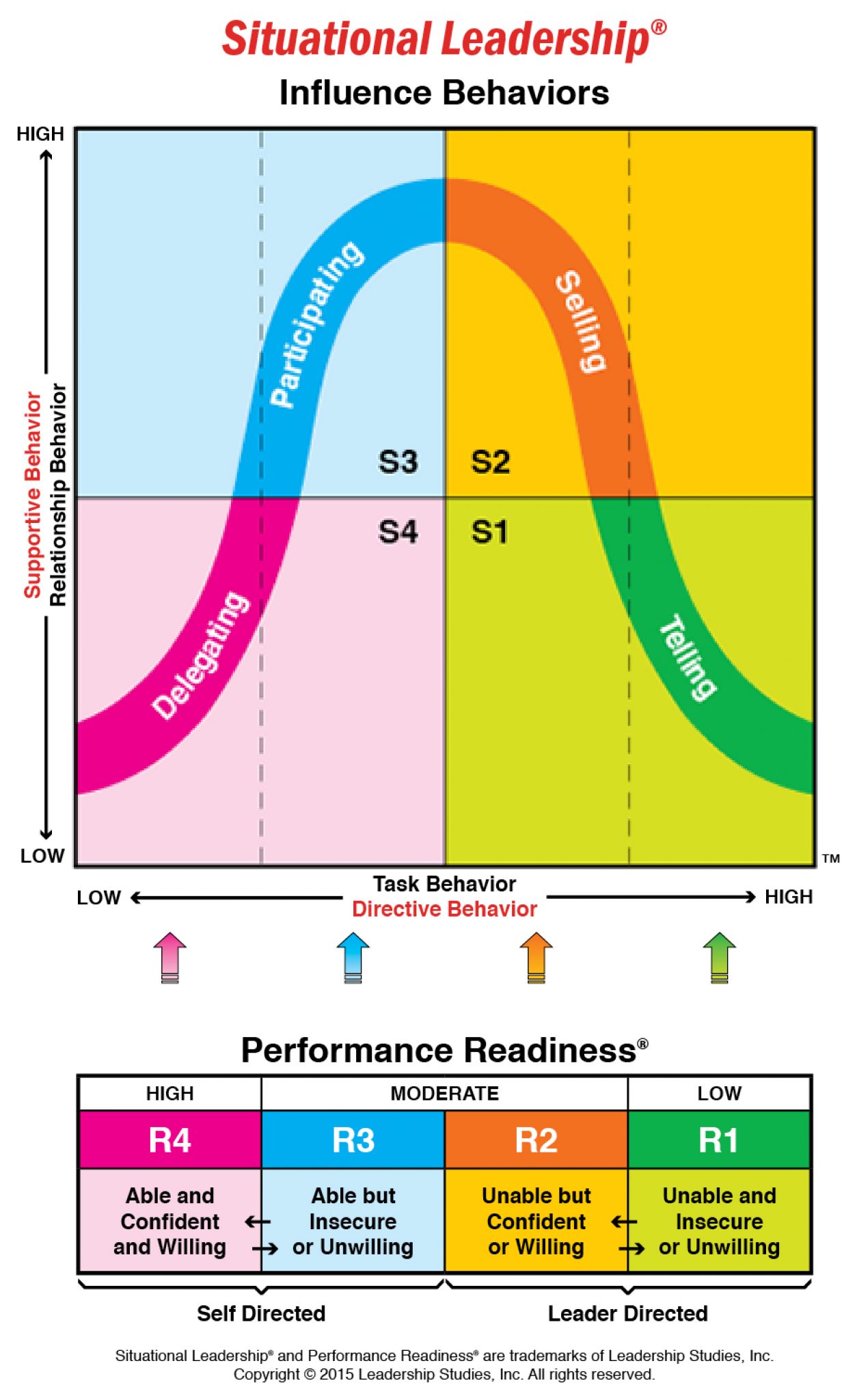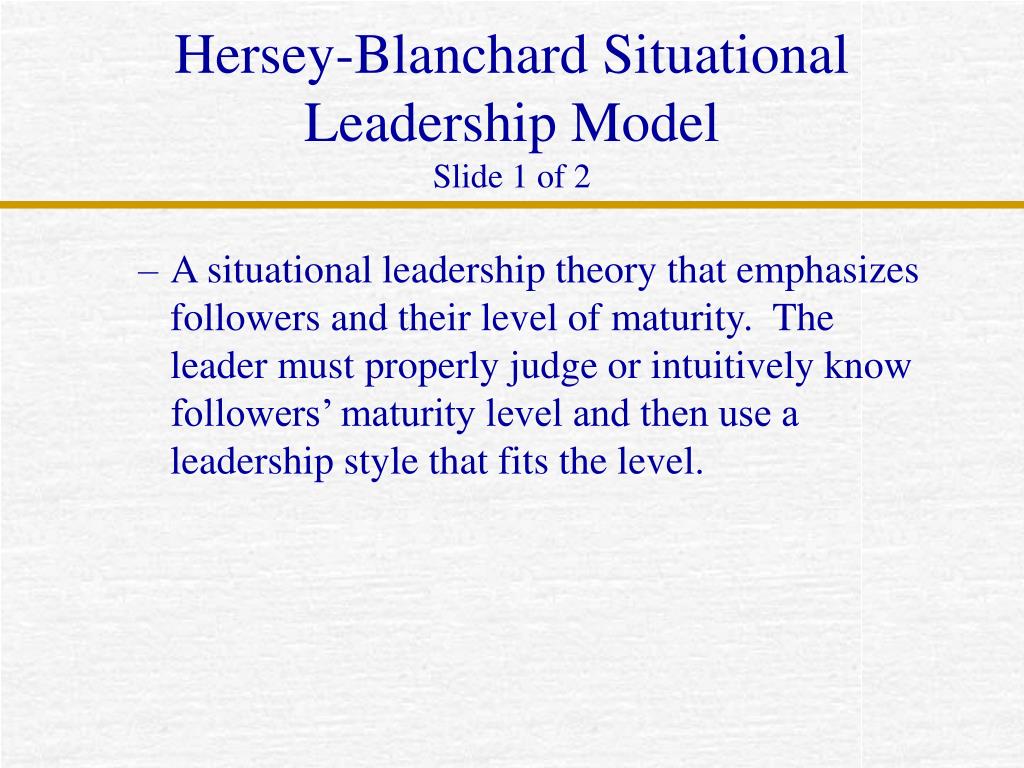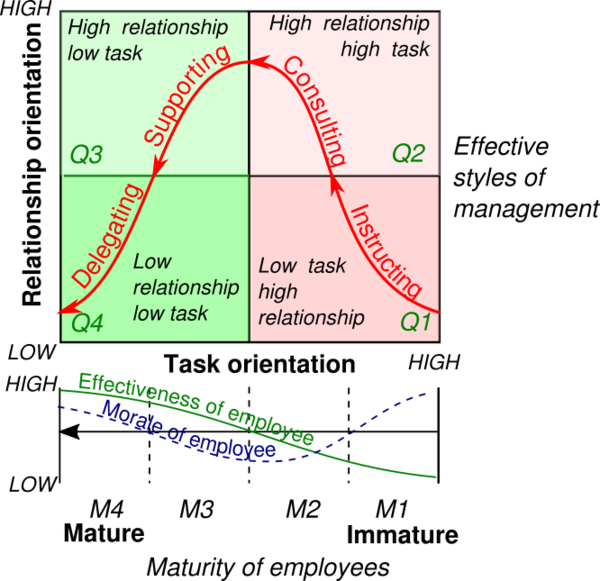Situational Leadership® theory is commonly shown as classifying followers according to a 2×2 matrix, using the highs and lows of two criteria, thereby giving four types of follower groups. Note: It is important to consider that groups and individuals may require different approaches when using Hersey and Blanchard’s model.. Paul Hersey and Kenneth H. Blanchard, “Life Cycle Theory of Leadership,” Training and Development Journal, 23, May 1969. Google Scholar William J. Reddin, “The 3-D Management Style Theory,” Training and Development Journal , April 1967, pp 8-17.

The Situational Leadership Model Explained by a CEO Leadership Ahoy!

Hersey and Blanchard Situational Leadership Model EXPLAINED B2U

Situational Leadership Model Hersey and Blanchard Management Weekly

The Gunter Group SITUATIONAL LEADERSHIP

When Context meets Challenge An Approach of Situational Leadership • Inbody

Four Leadership Styles Situational Leadership® Management and Leadership Training

Hersey and Blanchard Situational Leadership Model EXPLAINED B2U

PPT HerseyBlanchard Situational Leadership Model Slide 1 of 2 PowerPoint Presentation ID667492

PPT HerseyBlanchard Situational Leadership Model Slide 1 of 2 PowerPoint Presentation ID667492

What Is the Situational Leadership Theory? ToughNickel

Hersey and Blanchard’s Situational Leadership Theory Linked to Simmon’s… Download Scientific

The Situational Leadership® Model. Adapted from Blanchard, K. H.,… Download Scientific Diagram

The Situational Leadership Model Explained by a CEO Leadership Ahoy!

HerseyBlanchard Situational Leadership Theory
:max_bytes(150000):strip_icc()/Hersey-and-Blanchard-model.asp-final-2fb9e5419ff54bb3b78c8f43fc523323.png)
HerseyBlanchard Situational Leadership Model How It Works

Ilustration of Situational Leadership Model (Hersey &Blanchard, 1969) Download Scientific Diagram

8 Dynamics of Hersey and Blanchard’s Situational Leadership ® model… Download Scientific Diagram

3. HerseyBlanchard’s Situational Leadership Theory

Hersey and Blanchard model CEOpedia Management online

PPT Five Bases of Power (Influence) PowerPoint Presentation, free download ID202226
Per the situational leadership theory developed by authors Ken Blanchard and Paul Hersey in 1969, there is no one-size-fits-all approach to leadership. Blanchard and Hersey instead describe what they called the “situational leader,” whose style of leadership and decision-making will vary in order to meet the needs of their work environment.. Paul Hersey and Ken Blanchard first developed their ‘Life cycle theory of leadership’ in 1969 1. They subsequently renamed the theory ‘situational leadership’ and continued to develop it both together and individually. The theory describes four different leadership styles and four levels of individual or team maturity or readiness.


